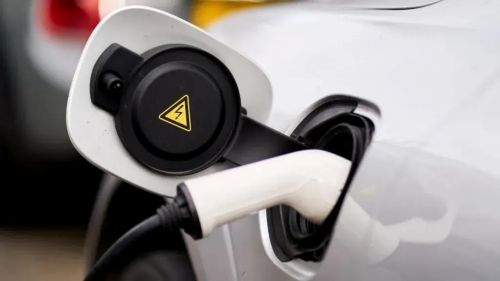
Surge Protection in EV Charging Stations: Safeguarding the Future of Electric Mobility
Introduction
As a leading EV charger manufacturer in China, LiCB Charge delivers reliable AC and DC electric vehicle charging stations along with comprehensive charging solutions tailored to diverse needs.As the world shifts towards sustainable energy, electric vehicles (EVs) are playing a pivotal role. However, the infrastructure supporting EVs, particularly charging stations, faces significant challenges. One crucial but often overlooked element is surge protection. EV charging stations handle high electricity loads, making them vulnerable to power surges caused by lightning, grid fluctuations, or internal faults. These sudden voltage spikes can cause severe damage to electronic components, resulting in malfunctions or system failures. Surge protection devices (SPDs) act as the first line of defense, preventing such damage and ensuring the safety and reliability of EV charging infrastructure.
Types of Surge Protectors for EV Charging Stations
Surge protection devices are classified into three types, each addressing specific needs:
Type 1 SPDs: Installed at the main power entry point, these protect against high-energy surges from lightning strikes or external sources. They are essential in areas prone to severe electrical disturbances.
Type 2 SPDs: Installed near the charging point, these provide secondary protection by shielding internal systems from residual surges and grid fluctuations.
Type 3 SPDs: Positioned close to sensitive components, these protect low-power electronics from localized surges, ensuring the safety of the system’s vital parts.
Combining these three types of SPDs offers comprehensive protection for both the infrastructure and vehicles.
Why Surge Protection is Critical
Surge protection is vital for several reasons:
Protecting Infrastructure: EV charging stations involve sophisticated electronics for power management and payment systems. A power surge can damage these components, leading to costly repairs or replacements. Surge protectors help ensure the longevity and functionality of this critical infrastructure.
Ensuring User Safety: Power surges pose significant safety risks, including electric shocks, fires, or overheating. By preventing surge-related hazards, SPDs create a safer environment for users.
Minimizing Downtime: Equipment failures due to surges can lead to extended downtime, loss of revenue, and customer dissatisfaction. Surge protection reduces the likelihood of such disruptions.
Regulatory Compliance: Many regulations now mandate surge protection for EV chargers. Compliance ensures safety, avoids penalties, and builds trust with users.
How Surge Protection Works
SPDs detect and divert excess voltage away from sensitive equipment, directing it safely to the ground. This process occurs in milliseconds, offering near-instantaneous protection. The effectiveness of an SPD depends on components like metal oxide varistors (MOVs), gas discharge tubes, and silicon avalanche diodes, which absorb and redirect surge energy. Advanced SPDs may also include diagnostic tools for real-time monitoring and proactive maintenance.
Key Features to Look for in EV Charger Surge Protectors
When choosing a surge protector for an EV charger, consider these key features:
Joule Rating: A higher joule rating (e.g., 2000+ joules) offers better protection.
Clamping Voltage: A lower clamping voltage (around 400V) ensures sensitive components are protected.
Response Time: A fast response time (less than 1 nanosecond) ensures timely protection.
UL Certification: Ensures the device meets rigorous safety standards.
Durability: Look for high-quality, weather-resistant materials and replaceable modules for long-term use.
Conclusion
Surge protection is essential for EV charging stations. It safeguards infrastructure, ensures user safety, reduces downtime, and helps meet regulatory requirements. As the demand for EV charging infrastructure grows, investing in reliable surge protection systems is crucial for maintaining safe, efficient, and sustainable charging solutions. Prioritizing surge protection today ensures a resilient network that supports the future of electric mobility.Know more about Google SEO Directory
© 2024 Crivva - Business Promotion. All rights reserved.